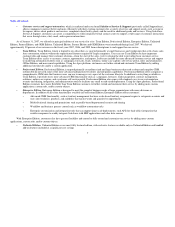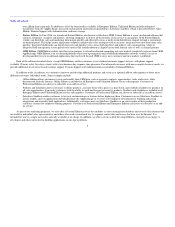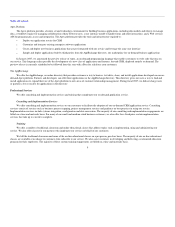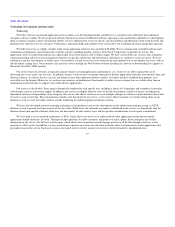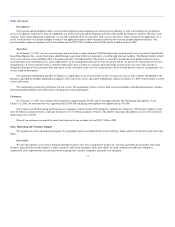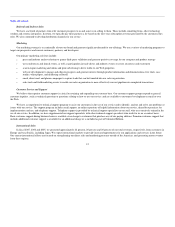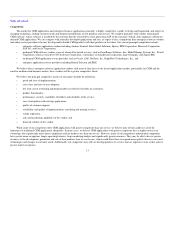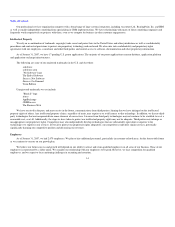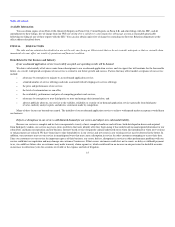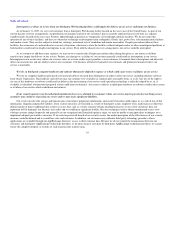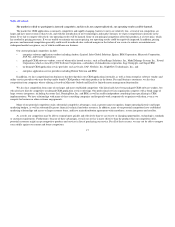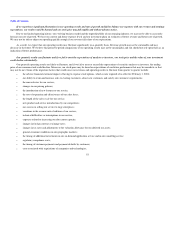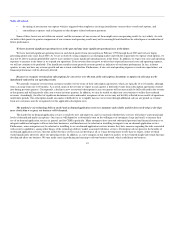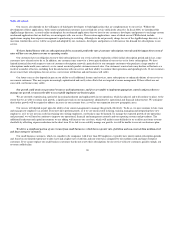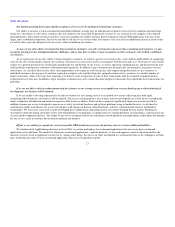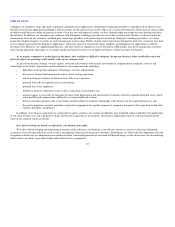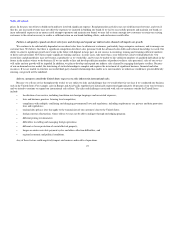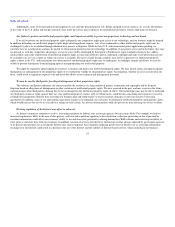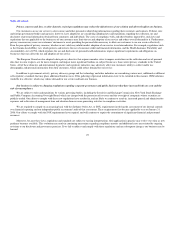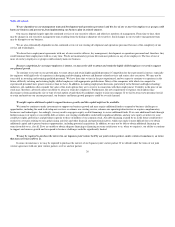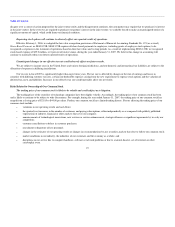Salesforce.com 2006 Annual Report Download - page 20
Download and view the complete annual report
Please find page 20 of the 2006 Salesforce.com annual report below. You can navigate through the pages in the report by either clicking on the pages listed below, or by using the keyword search tool below to find specific information within the annual report.
Table of Contents
The market in which we participate is intensely competitive, and if we do not compete effectively, our operating results could be harmed.
The market for CRM applications is intensely competitive and rapidly changing, barriers to entry are relatively low, several of our competitors are
larger and have more resources than we do, and with the introduction of new technologies and market entrants, we expect competition to intensify in the
future. If we fail to compete effectively, our operating results will be harmed. Some of our principal competitors offer their products at a lower price, which
has resulted in pricing pressures. If we are unable to maintain our current pricing, our operating results could be negatively impacted. In addition, pricing
pressures and increased competition generally could result in reduced sales, reduced margins or the failure of our service to achieve or maintain more
widespread market acceptance, any of which could harm our business.
Our current principal competitors include:
• enterprise software application vendors including Amdocs Limited, Infor Global Solutions, Epicor, IBM Corporation, Microsoft Corporation,
SAP AG, and Oracle Corporation;
• packaged CRM software vendors, some of whom offer hosted services, such as FrontRange Solutions, Inc., Made2Manage Systems Inc., Pivotal
Corporation, which is owned by CDC Software Corporation, a subsidiary of chinadotcom corporation, Sage Group plc, and SugarCRM;
• on-demand CRM application service providers such as Oracle, SAP, NetSuite, Inc., RightNow Technologies, Inc.; and
• enterprise application service providers including British Telecom and IBM.
In addition, we face competition from businesses that develop their own CRM applications internally, as well as from enterprise software vendors and
online service providers who may develop and/or bundle CRM products with their products in the future. For small business customers, we also face
competition from companies whose offering is based on Microsoft Outlook and Excel for limited contact management functionality.
We also face competition from some of our larger and more established competitors who historically have been packaged CRM software vendors, but
who also have directly competitive on-demand CRM application services offerings. Our professional services organization competes with a broad range of
large systems integrators, including Accenture Ltd., BearingPoint, Inc. and IBM, as well as smaller independent consulting firms specializing in CRM
implementations. We have relationships with many of these consulting companies and frequently work cooperatively on projects with them, even as we
compete for business in other customer engagements.
Many of our potential competitors enjoy substantial competitive advantages, such as greater name recognition, longer operating histories and larger
marketing budgets, as well as substantially greater financial, technical and other resources. In addition, many of our potential competitors have established
marketing relationships and access to larger customer bases, and have major distribution agreements with consultants, system integrators and resellers.
As a result, our competitors may be able to respond more quickly and effectively than we can to new or changing opportunities, technologies, standards
or customer requirements. Furthermore, because of these advantages, even if our service is more effective than the products that our competitors offer,
potential customers might accept competitive products and services in lieu of purchasing our service. For all of these reasons, we may not be able to compete
successfully against our current and future competitors.
17


